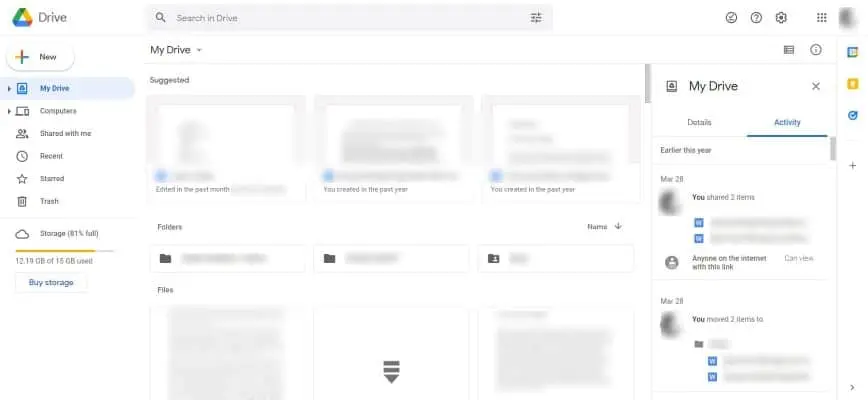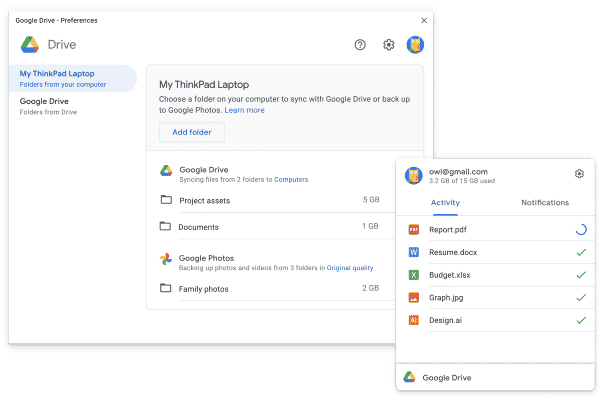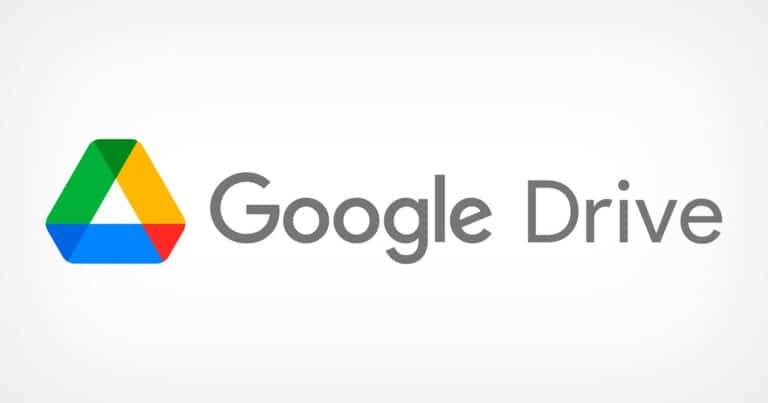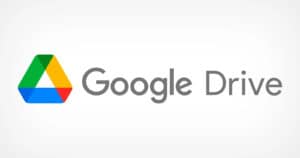Google Drive is known for its robust backup and cloud storage for both consumers as well as businesses. The best parts are the constant addition of new features and easy to use interface. Here is everything you need to know about Google Drive for G Suite.
What you will see?
Google Drive
Even though Google Drive was designed with the web in mind, it now has a number of handy mobile apps. It also provides desktop backup capabilities for Windows and macOS systems. Thus, allowing you to rapidly back up your files to the cloud. Google Drive is much more than a cloud-based storage and sync service with a generous free storage plan. It’s also an important component of a comprehensive office suite. Google Drive may be used to store online documents and backup items on your computer. Google One plans offer additional storage space and other benefits, and you get a lot for your money.
Moreover, if you use Google Workspace, you may think of Drive as part of the overall package, together with other apps like Google Docs, Sheets, and Slides.
A new Google Doc is automatically saved to Google Drive as you create it. You can install the Google Drive desktop client to operate locally on your device as a file-syncing and storage option. Also in addition to using the service as the default save area for all your Google-related files. Google Drive saves and syncs whatever files you tell it to when you set it up locally. If your device ever experiences a data loss, all of the contents you stored with the Google Drive cloud are safe and accessible via the Google Drive website. That way, if you need to buy a new device or completely erase and reset your current one, you’ll have all the files you need.
Pros
- Speedy and simple to use
- Comprehensive app selection
- Free online office suite
- Generous free storage space
- Excellent productivity-suite collaboration
- Desktop-to-desktop file syncing
- Many third-party integrations
Cons
- Not a full backup solution
- Tied tightly into Google’s ecosystem
- No end-to-end encryption
- No password protection for shared files
- Mobile apps could do more
Price and Plans
Google Drive’s free tier gives you 15GB of cloud storage space to use across all of your Google apps, including Gmail and Google Photos. This is quite considerable compared with what you get for free with other storage services. You must pay for a Google One account if you require extra storage capacity. Google One offers additional storage for $1.99 (£1.42) per month for 100GB of space or $19.99 (£14) annually. The Google Photos mobile app includes extra photo-editing features as well as phone and text chat support. Plans with even more storage, such as 200 GB and 2 TB tiers, are also available. For organizations, Google Workspace combines all of Google’s tools, including Drive and Gmail, with additional infrastructure and functionality for managing teams of employees.
The $2.99-per-month (or $29.99-per-year) Standard plan gives you 200GB of storage plus a 3% discount on Pixel phones, Nest smart home devices, and other Google Store items. Pricing starts at $6 (£4.27) per month per user and includes 30GB of storage space. There are also higher tiers, which offer more storage space and features such as additional data loss prevention technologies. Moreover, when you pay for additional storage space, Google gives you some extra tools too. This includes photo editing tools, a mobile VPN service, and discounts on Google products. If you want to use the VPN service, you’ll need to upgrade to the $9.99 per month (or $99.99 per year) Premium plan. This includes 2TB of storage and a 10% shop discount.
The most expensive options run up to $149.99 per month for 30TB of storage. Five family members and friends can share all of the plans. If you pay for a Basic, Standard, or Premium plan annually rather than monthly, you will receive little savings.
Features

When it comes to the features you want from a cloud storage option, Google Drive comfortably outperforms the competition. You may access and modify your files from anywhere using the online interface and mobile apps. Furthermore, the sharing options strike an outstanding mix between functionality and usability. Sharing permissions can be established at the admin level. Thus, allowing various contacts access to different files. And you can also share files and folders with standard links or email invitations as needed. Although only available on the Business and Enterprise accounts, the Team Drives component is quite well done. It is a customized place where groups of coworkers can collaborate on files and folders.
Access to Team Drives may be easily managed, with the ability to know who can and cannot access and update files. There are smart elements as well, such as the ability to customize each Team Drive’s theme or the ability to email all of a Team Drive’s members at once. There’s seamless access to Docs, Sheets, and Slides, each of which is a mature and polished web program. If you don’t want to convert your Word, Excel, or PowerPoint files, you may just keep them in Google Drive and sync them across as many devices as needed. Google Drive cloud is an amazing offering, with file versioning, powerful search, offline access, and a range of preview and layout options. Although desktop synchronization isn’t as simple as Dropbox, you may sync any folder to the cloud from Windows and macOS.
Moreover, you can keep specific files and folders on the web entirely (with no need for local copies to take up room on your hard drive). The sleek notification tool for file and collaboration changes is also quite useful.
Interface
Every Google program has a recognizable user interface with plenty of white space, a splash of color, and bold visuals. The Google Drive cloud design makes up for its lack of sophistication with its intuitiveness and speed. Locating files is quick and easy, whether you’re looking for keywords and file types in the top search bar or browsing through folders and shares in the left navigation bar. Google Drive automatically applies its Optical Character Recognition (OCR) to PDFs and photos. This allows you to search through the text as if it were any other document. You can quickly copy, move, star, and rearrange files as you see fit.
On the main web interface, you can choose between a thumbnail view and a more traditional list view. You can drag and drop files around exactly as you would with typical desktop software. Google claims that Drive uses AI to bring documents and files you’re likely to desire next to the top of the file list. Although, it’s simple enough to browse through your folders or search more explicitly. ‘Recent‘ is effectively just a list of files in reverse chronological order and works well enough in most circumstances. Files can be viewed instantaneously in the mobile apps for Android and iOS, with an interface design that closely resembles that on the web.
Along with accessing Google Drive through a browser and uploading files, you can also download the Backup and Sync program for Windows and macOS. This allows you to sync your Google Drive locally and upload files to the web from other widely used folders.
Web Interface

The online interface of Google Drive has improved over time and is now more intuitive than ever. It’s simple to switch between thumbnail images and a list in the file view. You can easily arrange your files by creating folders and subfolders. Color-coding and stars are two further ways to organize folders. It’s worth noting that you can upload files from your computer by dragging and dropping them into any open folder in the browser. If you use Google Drive to sync files from other devices, they’ll appear in the left pane. Google Drive names them by their device name by default, but you can rename them to whatever you like.
Figuring out how to free up space on Google Drive will always remain hard. This is because you need to find and eliminate huge and unneeded items, especially files shared with you. This remains awkward and hard in the web interface. It has grown a lot better since the advent of Google One. An interface now assists you in determining the cause of nearly full storage. Moreover, it pinpoints probable issue areas as you delve down. Drive can handle Forms, Drawings, Maps, PDFs, picture files, and more in addition to Google Docs, Sheets, and Slides. Third-party Web programs can also be used to work with various sorts of files, such as CAD or music files.
Desktop Software

Google’s desktop synchronization software was previously known by many names. It was once known as Backup & Sync for consumers and File Stream for business accounts. If you’ve previously installed one of the older versions, you’ll want to uninstall it and replace it with the latest version. When you install the new version, it will notify you if an older version is already installed and ask if you want to remove it. Following the download and installation of the desktop client, you will be prompted to authenticate your account via the online browser.
The Google Drive software will then prompt you to grant access to files on your desktop and in your Documents folder. Those are only preliminary approvals. You may then open the software and select the folders on your computer you want to back up. The previous desktop app required a far more complicated setup. Individual folders are selected one at a time in Google Drive.
Google Drive on Mobile
All of the major mobile platforms have Google Drive apps. You may easily access the most recent versions of all your files from your mobile or tablet. In the Google Drive app, you may view over 90 different file kinds. You can modify files in Google Drive in some circumstances. However, it will typically suggest that you edit them in other Google apps, such as Sheets or Docs. The Google Drive mobile app also allows you to read and comment on files. Many file syncing and storage apps allow you to upload photographs and videos taken on your phone or tablet automatically. You’ll never have to remember to back them up again.
Because the Google Drive app lacks that capability, the Google Photos app comes into action.
Another flaw is that there is no option for automated document scanning when taking a picture and uploading a fresh image to the Google Drive app. Another mobile app, Google Lens, is required for this. In short, you’ll need to install extra apps if you want all of Google Drive’s features on your mobile device. Installing the Google One mobile app, which you can use even if you don’t have a premium Google One account, gives you extra functionality and capabilities. Nonetheless, for someone who simply wants to back up their data to Google Drive backup, learning that you need to know all of the different products, services, and apps to acquire what you need is bewildering.
Streaming VS Mirroring
When it comes to transferring files from Drive to your PC, you have two options: Streaming or Mirroring. Streaming files implies that all of your My Drive files are stored in the cloud and can only be accessed from your computer. “My Drive” files are those that you either generate or upload directly in the Google Drive online app. That are files that do not come from an external source such as your computer or phone. You may also specify which files and folders to make available offline with this option. Changes to the files are automatically synced.
When you Mirror files, you save all of your My Drive files in the cloud and on your PC.
You won’t have to choose specific files or folders because they’ll all be available offline. Any modifications you make to any of the files are automatically synced to the other location. If you don’t want to use up a lot of your computer’s local storage, streaming is the best alternative. Only when you’re working on files and those you want to make available offline will they take up space on your machine. If you don’t want to fiddle with whether files should be available offline, mirroring is the best option. Although, it will take up more space on your computer depending on how much data you have in Google Drive backup and storage.
Powerful Search and OCR
The files you save in Google Drive backup and storage can be found quickly. Optical character recognition, or OCR, is one method. Google Drive analyses picture files and PDFs for text and make them searchable when you save and sync them. You can search for a word across all of your Google Drive files. And the software will find it immediately, even if the word is not present in the name of the file. You used to have to open a PDF or image in Google Docs to get Google Drive to read and interpret the text. But that’s no longer the case. After you save the file to Google Drive backup and storage, it now functions practically instantly.
Security
Google Drive backup uses encryption to store and transfer files, but it’s not end-to-end encryption. This means Google can look at your data if it wants to. In general, Google has a good security record. Moreover, it supports several levels of two-factor authentication (2FA), as well as multiple checks to prevent unwanted account access. In other words, if someone wants your data, they’ll have to work very hard to get them. File and folder sharing technologies are quite particular and difficult to get mixed up with because you can see who has access to what at all times.
Those on a Business or Enterprise plan can examine Google Drive backup and cloud storage usage using full audit logs. These ensure that every 1 and 0 is accounted for, as well as customizable admin notifications for specific events occurring on Google Drive files. Google’s data centers are extremely secure. They are geographically dispersed and have completed all applicable SOC audits. As well as met all necessary criteria to ensure the security of your data.
Privacy
You can read Google’s privacy policy, which is written in reasonably simple English but is lengthy, as one might anticipate. You can disable or delete information that Google collects about you and your actions using the tools provided. Reading through all of your options and actually identifying the information you want to restrict or remove without selecting the wrong one is the most difficult aspect. The company also provides a transparency report that shows how many requests it receives for things like user information and government requests to erase data. However, because Google is such a large corporation with several divisions, products, and services, even its transparency report is merely a long list of further links. It may take some time for you to sort through the data and find what you’re looking for.
Conclusion
Google, unlike some of its competitors, resides online, making it a natural option for dependable cloud storage. It’s a complete solution for both consumers and enterprises when you add in the simple-looking but powerful apps for Windows, macOS, Android, and iOS. It may be accessed from any computer or device because it is web-based. Moreover, it even works well with Google’s other fantastic programs, such as Google Calendar and Gmail. It provides so much in terms of online programs, collaboration options, and file management that it is currently one of the most amazing cloud storage providers. The major benefit is that you receive a lot of free storage space. Google Drive backup and storage is exceptional in terms of how it can help you save, back up, create, and even alter files, whether you work alone or in a group.
Read More!
- How to manually create folders and move documents in the Files app and iCloud Drive?
- How to save your Desktop and Documents folder to iCloud Drive?
- Simple ways to use iCloud Drive on iPhone and iPad!
- You can now rearrange your Apps on iPhone and iPad easily!
- How to move your files from Dropbox, Google Drive, or OneDrive to iCloud Drive on a Mac?














